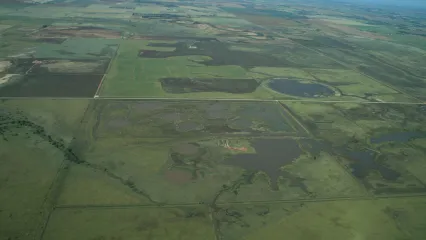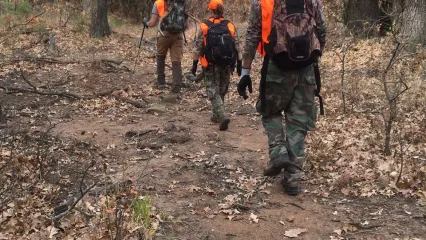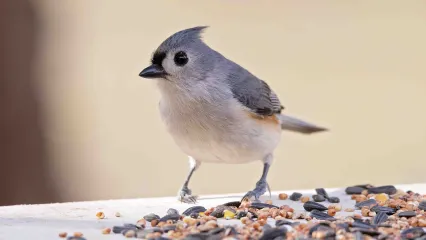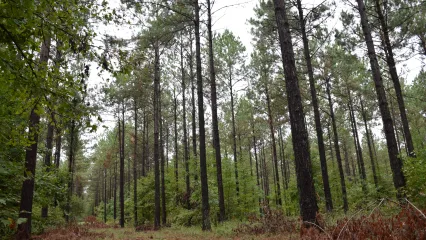Attention Non-Residents
The Oklahoma Wildlife Conservation Commission adopted new rules in 2025 that require non-residents accessing certain Oklahoma public hunting and fishing areas to check in and out of the area. By checking in and out of these areas, hunters, anglers, shooters, birdwatchers, hikers and any other users can help the Wildlife Department better understand how the area is being used. There is no additional cost associated with checking in or out of an area. There is no limit to the number of check ins for an individual in a year.

Contacts
Area Details
Drummond Flats WMA covers 5,122 acres in western Garfield County in north central Oklahoma. Located immediately west of the town of Drummond, or approximately 8 miles southwest of Enid, Drummond Flats is a historic overflow basin at the confluence of Turkey Creek, Elm Creek, and Salt Creek, and is predominately a wetland habitat with some surrounding upland habitat.
The average annual precipitation for the area is about 34 inches.
Going Quail Hunting?
During quail hunting season, wing collection boxes are placed at several wildlife management areas: Beaver River, Optima, Packsaddle, Cooper, Kaw, Drummond Flats, Canton, Fort Supply, Cross Timbers, and Pushmataha. Hunters are asked to donate a wing from each quail they harvest for research purposes. Ultimately, the wings can help determine the status of the quail populations at the WMAs and can offer clues about how next year’s season might pan out.
From Drummond: ½ mile west of the junction of State Hwy 132 and Skeleton Rd.
- Waterfowl: Ducks are usually present in fair to good numbers but will fluctuate with weather changes and water availability. Geese may occasionally be present but are not as abundant.
- Sandhill Crane: May be available on occasion during the fall migrations.
- Pheasant: Present in moderate to good numbers and will use all parts of the WMA not covered by standing water.
- Quail: Present in low numbers in upland areas and un-flooded wetland sites.
- Deer: Available in low numbers.
- Turkey: Rio Grande wild turkeys may be present in upland areas during the spring and summer, but are not common.
- Rabbit: Cottontail rabbits are available in low to fair numbers. Jackrabbits are occasionally present but are but are not common.
- Furbearers: Coyote, bobcat and raccoon are available.
- Dove: Usually present in fair to good numbers.
- Shorebirds: Drummond Flats is an excellent area to view a variety of shorebird species. Spring migration is the best time for viewing.
- Wading Birds: Many different species of wading birds can also be observed on Drummond Flats. Wading birds may be observed on the area throughout the year, but are most abundant during the spring migration.
Drummond Flats WMA is currently still in the development phase with additional wetland areas planned for development over the next several years. There are currently 8 water control structures, 9968 ft. of dikes and 5 wetland units constructed to provide wetland habitat. Management efforts include moist soil management of the wetland units, and manipulation of the surrounding habitat to provide native food plants such as smartweeds, pigweeds, native millets, sedges, sunflower and ragweed. Agriculture crops are currently planted on a small part of the area and will be used primarily for dove management.
One designated primitive camping area is available. Lodging is available in Enid, and restaurants are available in Enid Drummond & Lahoma.
Seasonal fishing opportunities may be available in turkey creek located on the northeastern portion of the WMA. All wetland impoundments on Drummond Flats will be periodically drained to allow for native vegetation growth, and will offer very little to no fishing opportunity.
All shotgun hunting is restricted to federally approved nontoxic shot.
Closed Seasons
Same As Statewide Seasons
Seasons w/ Special Restrictions
- Duck, Merganser and Coot
Hunting hours for waterfowl close at 1 p.m. daily.
- Turkey Spring, Youth Turkey Spring
One-tom limit; seasons combined.
- Quail
Closed to non-resident hunting February 1-15.
- Trapping
Open to water sets, live box traps and enclosed trigger traps only through Jan 31. Open same as statewide Feb 1 through end of February.
Hunter and angler camping is allowed in designated areas.
Drummond Chamber of Commerce
(580) 493-2900
Lahoma Chamber of Commerce
(580) 796-2600
Enid Chamber of Commerce
P.O. Box 907 Enid, OK 73702
580/237-2494
Apprentice Designation: A Learner's Permit for Hunting
Hunter education has greatly reduced hunting accidents, but if you can’t complete a course right away, the apprentice designation allows you to hunt under supervision. It works like a learner’s permit, giving you the chance to gain real experience safely until you finish hunter education.
Exploring the New Herron Family WMA
The new Herron Family WMA is more than 17,000 acres of hunting land, it is also adventure, access, conservation, and tradition. Thanks to a unique partnership, Oklahoma residents now have a new place to chase deer, call turkeys, hear quail, and pass on the outdoors to the next generation.


